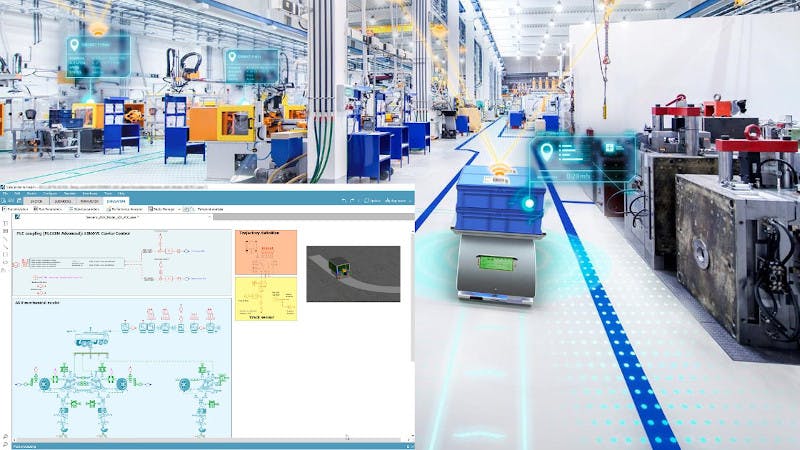Automated guided vehicles / Autonomous mobile robots promise flexibility, productivity, maneuverability, and safety while minimizing operational costs in the industry, warehouse, fulfillment centers, and civil/domestic applications.
However, developing an AGV that can be customized to meet the needs of various environments and driving spaces is complex and expensive. AGV/AMR original equipment manufacturers (OEMs) face several engineering challenges due to the intricate nature of the autonomous systems, the tight integration between physical hardware and control algorithms. Tight integration of automation, energy management, environment, sensor, and operation expertise during design is necessary to realize highly flexible and scalable AGV/AMRs.
Watch this system engineering webinar and learn about the six key pillars that are integral to the success of AGV/AMR.
You will learn to:
- Utilize system engineering principles to reduce the development time and cost of AGV/AMR systems
- Overcome speed, self-steering and maneuver limitation without losing stability
- Utilizing virtual AI driving agent and effective controls validation
- Balance vehicle performance attributes, namely: speed, load, stability etc
- Integration of robots within the factory environment and coupling to material handling systems
Overcome mobile robots’ autonomy and charging challenges
Modern mobile robots including Automatic Guided Vehicle and Autonomous Mobile Robots are electrified vehicles that operate on battery. Efficient management of fleet autonomy and vehicle charging strategy is important to maintain a steady throughput.
Leading AGV/AMR manufacturers utilize system simulation software to predict battery performance during the work cycle with the actual load and speed of the vehicle. Register for this webinar and learn which parameters influence robots’ autonomy and discharging.
Optimize stability, speed and control of AGV/AMR
Increasing AGV/AMR speed has a direct impact on vehicle stability and operational control. Using system simulation software, engineers can evaluate multiple scenarios (changing the shape of the trajectory, velocity, etc.) before committing to a prototype. Register for this webinar and discover how insights from simulation help to optimize stability, speed, and control of AGV/AMR.
Virtual commissioning and controls validation of AGV/AMR
The virtual commissioning of an AGV/AMR digital mockup helps to develop control strategy in a risk-free environment. The digital model, when coupled with inputs from a real sensor, can be used for AGV monitoring to perform predictive maintenance tasks.
Register for this webinar to discover the virtual commissioning technique that enables manufacturers to roll out a concurrent mechanical, software, E/E hardware design process and replace expensive and time-consuming physical tests with early virtual validation of controls.
